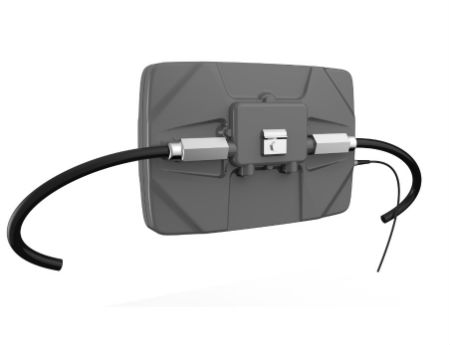Cable-Tec Expo: Antronix Pitches Full Duplex Alternative

While emerging “Full Duplex” DOCSIS technology aims to bring symmetrical, multi-gigabit speeds to hybrid fiber coax (HFC) networks, Antronix has developed a new, possibly complementary, hybrid PON/HFC platform that, it says, can also deliver multi-gigabit speeds by taking advantage of high-spectrum frequencies.
Get complete coverage of Cable-Tec Expo 2016
As an overlay approach, Antronix’s “Intercept eHFC” platform is designed to enhance existing DOCSIS capacity and deliver symmetrical data while keeping the cost-per-bit low using spectrum in the 3.4 GHz to 4.7 GHz range – something the vendor likes to call “Ultra Wideband.”
The platform, the company explains, delivers PON signals to the company’s access-class node in conjunction with multi-taps that are optimized to handle ultra-wideband frequencies. The cable headend, meanwhile, would require a network controller that houses the provisioning piece to control the upstream and downstream data rates. In this initial phase of the product, the customer premises would require a media converter to access the additional throughputs supported by the Intercept eHFC platform.
Antronix said its Intercept platform is compatible with DOCSIS, RF over Glass (RFoG) and MoCA 1.0 and 2.0 architectures. Like Full Duplex DOCSIS, Antronix’s Intercept eHFC platform is a node+0 solution. However, Antronix claims that the bit-per-dollar of its platform will be lower than that of traditional DOCSIS QAMs.
RELATED: CableLabs: DOCSIS 3.1 Upstream Booster on Fast Track
Antronix sees its technology fitting into consumer and business services applications, though it views residential as the more challenged of the two when it comes to delivering gigabit speeds.
The smarter way to stay on top of the multichannel video marketplace. Sign up below.
“We think it will play well in both markets,” Dave Wachob, Antronix’s director of business development, said of Intercept eHFC. “Consumers baffled us all on their thirst for data so we think that will continue.”
DOCSIS 3.1 represents a good “incremental leap” for cable operators, but this new approach could help MSOs free up spectrum for other services because the platform delivers service at higher frequencies, Juan Bravo, vice president of national sales at Antronix, added.
Antronix expects to have trials underway by the first quarter of 2017, and to have the platform production-ready by Q2 2017.
